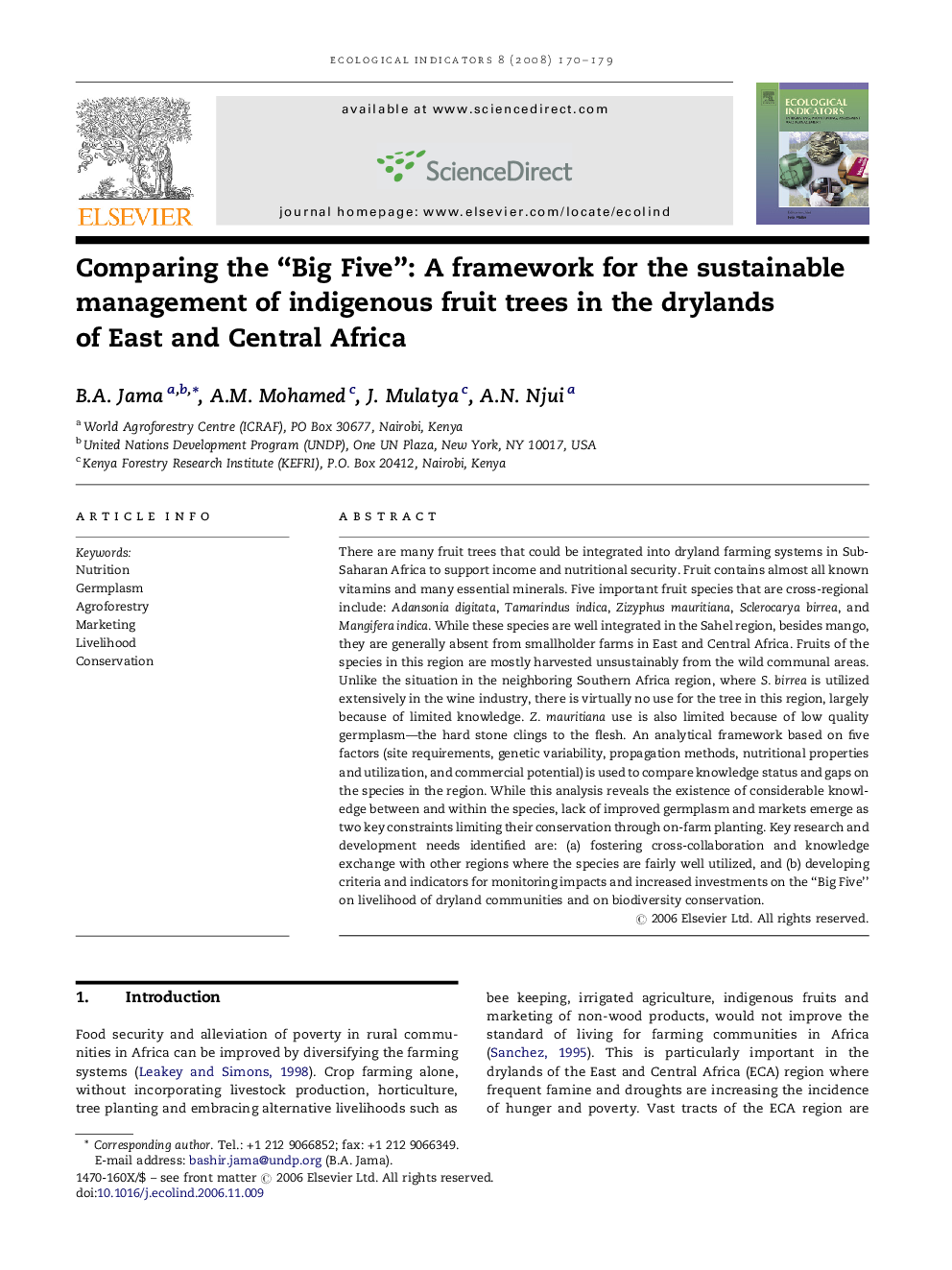| کد مقاله | کد نشریه | سال انتشار | مقاله انگلیسی | نسخه تمام متن |
|---|---|---|---|---|
| 4374631 | 1303184 | 2008 | 10 صفحه PDF | دانلود رایگان |

There are many fruit trees that could be integrated into dryland farming systems in Sub-Saharan Africa to support income and nutritional security. Fruit contains almost all known vitamins and many essential minerals. Five important fruit species that are cross-regional include: Adansonia digitata, Tamarindus indica, Zizyphus mauritiana, Sclerocarya birrea, and Mangifera indica. While these species are well integrated in the Sahel region, besides mango, they are generally absent from smallholder farms in East and Central Africa. Fruits of the species in this region are mostly harvested unsustainably from the wild communal areas. Unlike the situation in the neighboring Southern Africa region, where S. birrea is utilized extensively in the wine industry, there is virtually no use for the tree in this region, largely because of limited knowledge. Z. mauritiana use is also limited because of low quality germplasm—the hard stone clings to the flesh. An analytical framework based on five factors (site requirements, genetic variability, propagation methods, nutritional properties and utilization, and commercial potential) is used to compare knowledge status and gaps on the species in the region. While this analysis reveals the existence of considerable knowledge between and within the species, lack of improved germplasm and markets emerge as two key constraints limiting their conservation through on-farm planting. Key research and development needs identified are: (a) fostering cross-collaboration and knowledge exchange with other regions where the species are fairly well utilized, and (b) developing criteria and indicators for monitoring impacts and increased investments on the “Big Five” on livelihood of dryland communities and on biodiversity conservation.
Journal: Ecological Indicators - Volume 8, Issue 2, March 2008, Pages 170–179